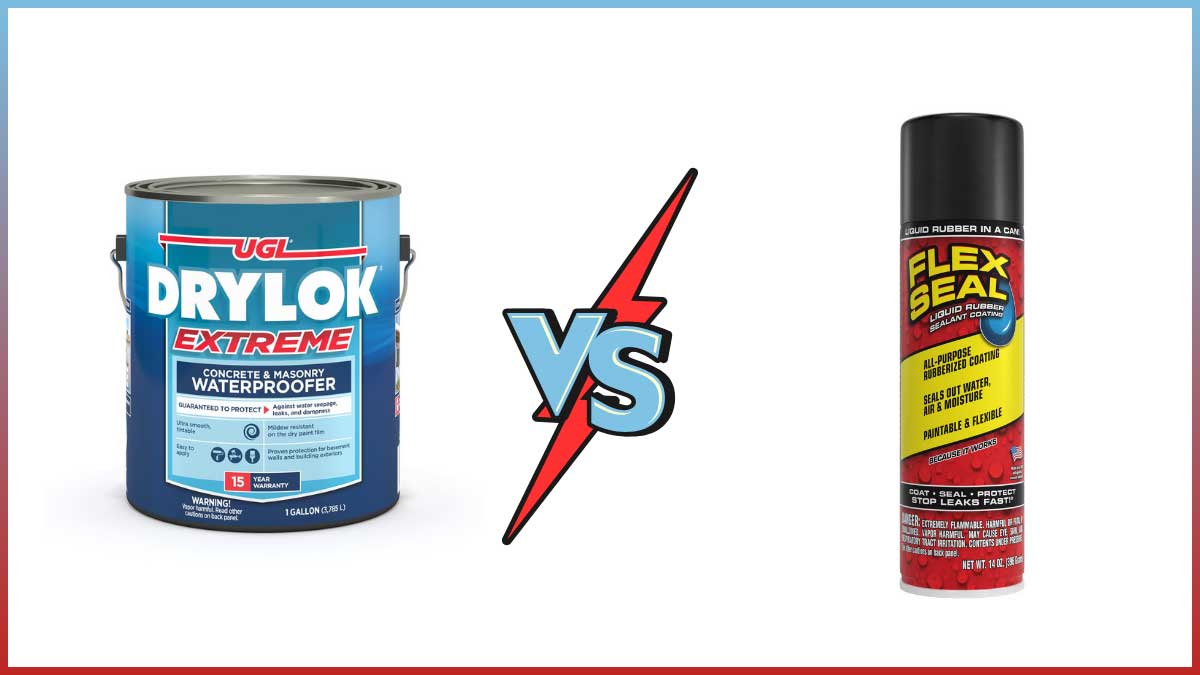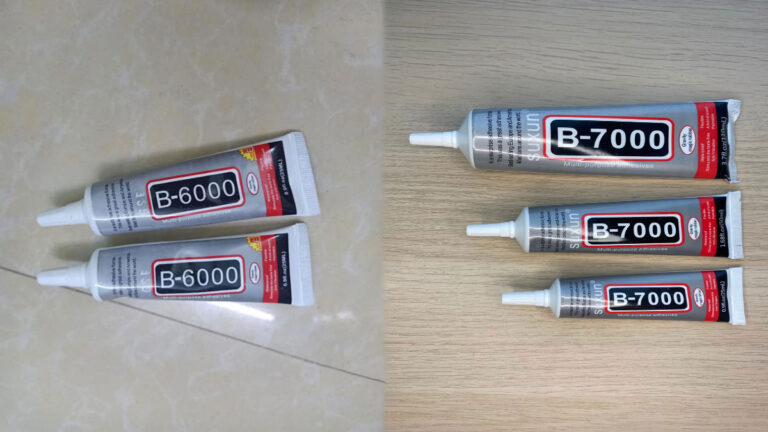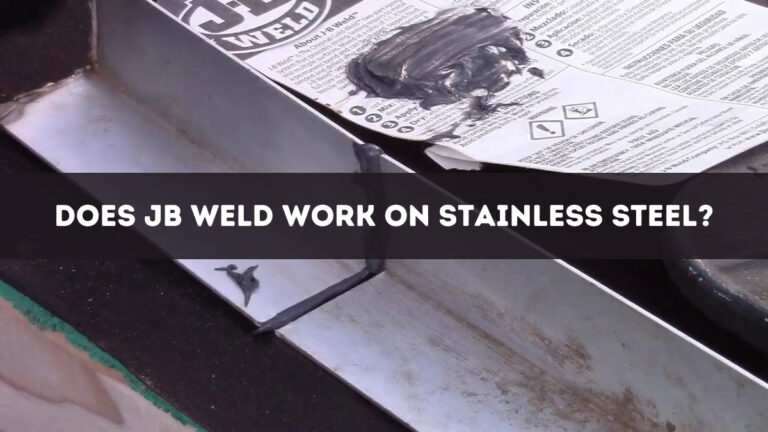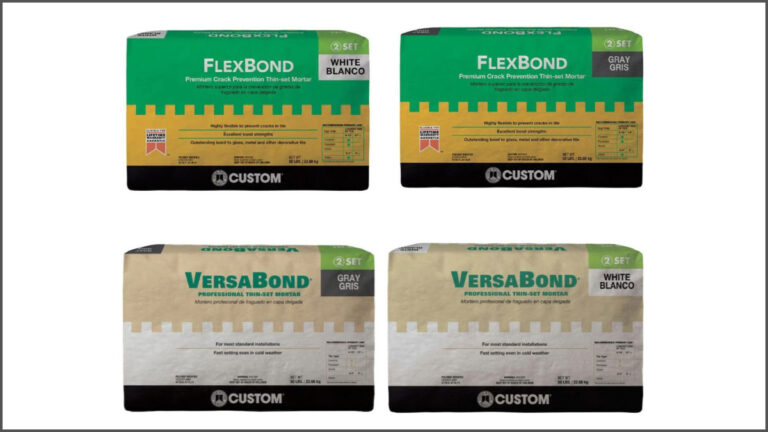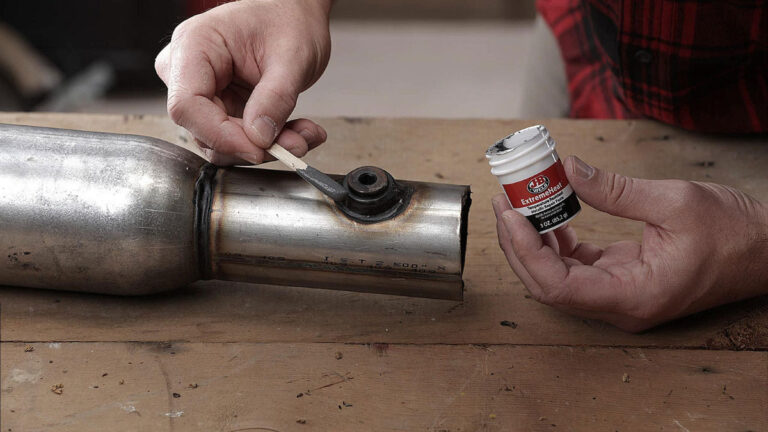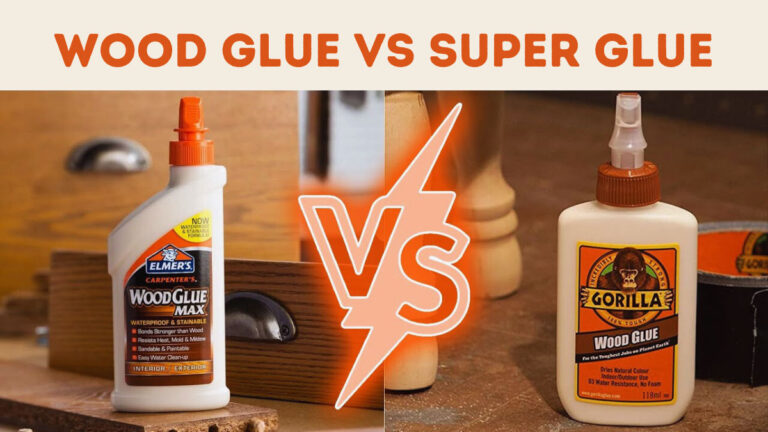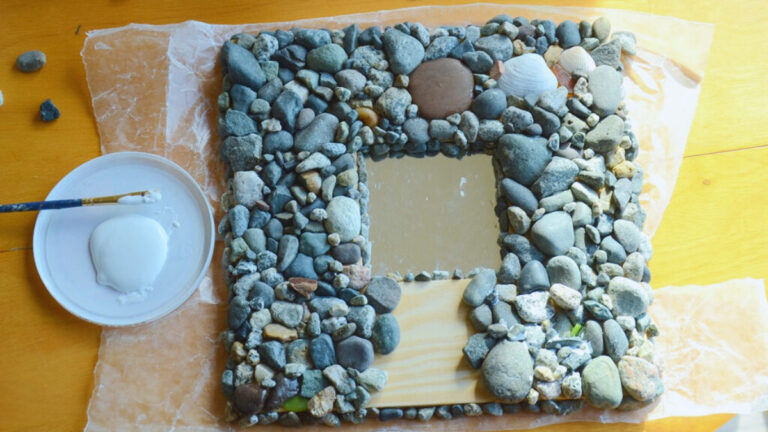Drylok vs Flex Seal: Choosing the Best Waterproofing Solution
When it comes to waterproofing solutions, Drylok and Flex Seal often come up as top contenders. Whether you’re dealing with a leaky basement or aiming to protect outdoor surfaces, choosing the right product can make all the difference. Both Drylok and Flex Seal promise to keep water at bay, but they each have unique features that might make one better suited for your needs than the other.
Understanding the strengths and limitations of these products can save you time, money, and future headaches. In this text, you’ll get a clear comparison of Drylok vs. Flex Seal, helping you make an well-informed choice for your next waterproofing project.
Key Takeaways
- Purpose and Application: Drylok is best for waterproofing masonry surfaces like concrete and brick, while Flex Seal is more versatile, suitable for quick fixes on metal, wood, and more.
- Cost: Drylok is generally more cost-effective for larger projects, while Flex Seal tends to be pricier but is excellent for quick, targeted repairs.
- Ease of Use: Drylok requires a clean, prepped surface and applies like paint, often needing two coats. Flex Seal is easier to apply with its liquid, spray, and tape forms, providing instant sealing for emergency repairs.
- Durability: Drylok offers long-lasting waterproofing, especially with proper surface preparation. Flex Seal is durable but might need reapplication over time, particularly in harsh conditions.
- Color Options: Drylok comes in a limited range of colors, whereas Flex Seal offers various color options, allowing for better aesthetic matching.
- Compatibility: Using Drylok and Flex Seal together is not recommended due to potential issues with adhesion and chemical compatibility, which can lead to suboptimal results.
Overview Of Drylok
Drylok is a trusted choice for waterproofing and sealing various surfaces. It helps prevent water intrusion in foundations and interior walls, making it essential for homeowners facing moisture issues.
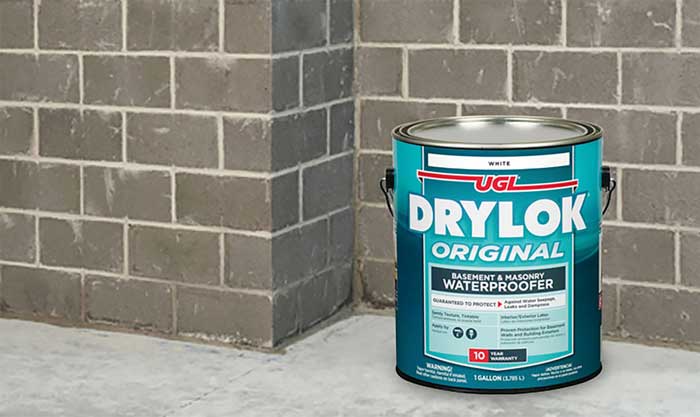
Key Features
Purpose:
Drylok waterproofs and seals interior walls and foundations, blocking water from penetrating masonry surfaces.
Application:
It applies like paint, penetrating tiny pores to create an impenetrable coating.
Surfaces:
You’ll find Drylok effective on:
- Poured concrete
- Concrete blocks
- Brick
- Stucco
- Cinder blocks
Types:
Available in multiple formulations, Drylok includes:
- Oil-based
- Latex-based
- Six colors and four different tints
Cost-Effectiveness:
For larger projects, Drylok is generally more cost-effective than Flex Seal, making it a favorite among budget-conscious homeowners and contractors.
Pros and Cons
Pros
- Affordable: At around $20 per gallon, Drylok is significantly cheaper than Flex Seal.
- Easy Application: It doesn’t require specialized skills, making it accessible for DIY projects.
- Versatile: Suitable for various surfaces, providing flexibility in different projects.
Cons
- Appearance: Limited color options might not meet all aesthetic needs.
- Preparation: Surface prep is essential for optimal performance, which can be time-consuming.
- Drying Time: Takes longer to dry compared to some other waterproofing solutions.
| Feature | Drylok | Flex Seal |
|---|---|---|
| Purpose | Waterproofing interior walls | Sealing leaks and cracks |
| Application | Paint-like, penetrates pores | Spray, brush, or roll |
| Surfaces | Concrete, brick, stucco, blocks | Metal, wood, plastic, masonry |
| Types | Oil-based, Latex-based | Liquid, aerosol, tape |
| Colors/Tints | Six colors, four tints | Multiple colors |
| Cost | ~$20 per gallon | More expensive per volume |
Using Drylok offers cost-effectiveness and ease of application, especially for larger projects. Proper surface prep ensures the best results, even though the longer drying time.
Overview Of Flex Seal
Flex Seal is a notable waterproofing solution known for its versatility and ease of use. Unlike Drylok, which is primarily for interior walls, Flex Seal serves various surfaces. It’s popular for quick repairs and coating applications.
Key Features
- Versatility: Flex Seal suits multiple surfaces, including metal, wood, concrete, and fabric. This makes it useful for both indoor and outdoor projects.
- Ease of Application: It comes in various forms like liquid, spray, and tape. All versions are designed to be user-friendly, especially for quick fixes.
- Immediate Sealing: Flex Seal provides an instant waterproof barrier upon application. This can be crucial for emergency repairs.
- Color Variety: More color options are available compared to Drylok. This allows for better matching with existing surfaces.
Pros and Cons
Pros:
- Multiple Use Cases: It’s excellent for emergency repairs like fixing leaks in gutters, roofs, and pipes.
- No Mixing Required: Unlike some waterproofing solutions, Flex Seal doesn’t require mixing, saving you time and reducing mess.
- Durability: Flex Seal forms a durable, flexible layer that lasts longer under various conditions.
- Cost: Generally, Flex Seal is more expensive than Drylok. This can be a consideration if you have a tight budget.
- Surface Preparation: Though advertised as quick and easy, proper surface preparation is still essential for optimal results.
- Temporary Solution: In some situations, Flex Seal may act as a temporary fix. Over time, it might need reapplication, especially in harsh weather conditions.
| Feature | Drylok | Flex Seal |
|---|---|---|
| Application | Paint-like, penetrates surface pores | Liquid, Spray, Tape |
| Surfaces | Poured concrete, bricks, stucco | Metal, wood, concrete, fabric |
| Use Case | Interior walls, foundations | Emergency repairs, various surfaces |
| Cost | More affordable | More expensive |
| Durability | Long-lasting with proper prep | Durable but may need reapplication |
| Colors | Limited | Wide variety |
Flex Seal stands out for its versatility and immediate sealing capabilities, making it suitable for quick repairs on various surfaces. Although it is more costly than Drylok, its user-friendliness and diverse application options justify the price for many users.
Drylok Vs Flex Seal: What’s The Difference?
When picking the right waterproofing product, you’ll often encounter Drylok and Flex Seal. Both products offer unique advantages depending on the project requirements.
Performance Comparison
Purpose and Effectiveness
- Drylok: Designed as a masonry waterproofer, Drylok can stop water up to 10 psi and resist 98 mph hurricane winds. It’s semi-impermeable, keeping out water and vapor. Ideal for masonry surfaces like brick, stucco, and concrete blocks.
- Flex Seal: A rubberized sealant for sealing leaks and gaps. Although effective for small, localized leaks, it’s not meant for waterproofing large masonry surfaces.
Surface Compatibility
- Drylok: Works best on clean, dry, grease-free masonry surfaces. Not suitable for wood, metal, or previously coated surfaces unless the coating is fully cured and compatible.
- Flex Seal: Versatile across multiple surfaces, including metal, wood, concrete, and fabric. Effective for various quick repairs and coating applications.
Application Methods
Drylok Application
- Preparation: The surface must be clean, dry, and free of grease. Remove any loose material.
- Application: Apply with a brush, roller, or sprayer. Ensure to scrub the first coat into the surface. Allow it to dry before applying the second coat.
- Drying Time: Typically dries within 3 hours but allows at least 24 hours for a fully cured surface.
Flex Seal Application
- Preparation: Ensure the surface is clean and dry. Remove any debris or rust.
- Application: Available in liquid, spray, and tape forms. Versatile application methods accommodate various projects.
- Liquid: Brush or pour on the surface.
- Spray: Apply directly from the can.
- Tape: Cut and stick to cover the leak.
- Drying Time: Initial drying within hours. Full curing may take up to 24-48 hours depending on thickness and environmental conditions.
Cost Analysis
Drylok Costs
- Price Range: Generally more cost-effective.
- Coverage: A gallon of Drylok covers approximately 75-100 square feet.
- Long-Term: Less expensive for large-scale projects, especially masonry waterproofing.
- Price Range: Typically higher than Drylok.
- Product Options: Available in multiple forms (liquid, spray, tape) with varying prices.
- Long-Term: Cost-effective for quick, targeted repairs.
| Feature | Drylok | Flex Seal |
|---|---|---|
| Purpose | Masonry waterproofer | Rubberized sealant |
| Effectiveness | Stops water up to 10 psi, resists 98 mph winds | Seals small leaks and gaps * |
| Surface Compatibility | Masonry surfaces | Multiple surfaces |
| Application Methods | Brush, roller, sprayer | Liquid, spray, tape |
| Drying Time | 3 hours initial, 24 hours full cure | Hours initial, up to 48 hours full cure |
| Cost | More cost-effective for masonry waterproofing | Higher, varies by form and use |
| Coverage (per gallon) | Approx. 75-100 sq ft | Variable |
Knowing these differences helps you pick the right product for your waterproofing or repair needs. Drylok suits large masonry surfaces, providing strong, long-lasting waterproofing. Flex Seal fits quick, multipurpose repairs across various materials.
Best Use Cases For Drylok
Drylok is a versatile and effective waterproofing solution suitable for various projects. Below are the best use cases where Drylok excels:
Large-Scale Waterproofing Projects
Drylok is ideal for large projects, such as waterproofing entire basements. It’s easier to apply on extensive surfaces and more cost-effective for these jobs. For example, when waterproofing a 1,000 square foot basement, Drylok’s larger coverage area per gallon reduces overall costs.
Various Surfaces
Drylok can be used on a variety of surfaces, including:
- Poured concrete
- Concrete blocks
- Brick
- Stucco
- Cinder blocks
This makes it a versatile option for different types of masonry, providing a consistent waterproof barrier.
Penetrating Sealing
Unlike regular paint, Drylok penetrates the tiny pores of the surface, creating an impenetrable coating that prevents water from leaking through. This feature is particularly effective for stopping water leaks in basements, ensuring a dry and protected living space.
Key Comparisons
| Feature | Drylok | Flex Seal |
|---|---|---|
| Application Method | Brush, roller, or sprayer | Liquid, spray, or tape |
| Ideal Surfaces | Masonry, concrete, brick, stucco | Metal, wood, concrete, fabric |
| Cost Efficiency | More economical for large projects | More expensive but versatile for quick fixes |
| Drying Time | Longer | Quicker |
| Color Options | Limited | Wide variety |
- Surface Preparation: Clean and dry the surface to remove any debris or loose particles.
- Applying Drylok: Use a brush, roller, or sprayer for even coverage.
- Second Coat: Apply a second coat for enhanced durability, especially on porous surfaces.
Using Drylok addresses your large-scale waterproofing needs effectively and economically.
Best Use Cases For Flex Seal
Flex Seal is a versatile liquid rubber sealant suitable for many DIY projects, especially those involving sealing cracks and holes to prevent water intrusion. Here are the best use cases for Flex Seal:
Sealing Specific Leaks and Cracks
Flex Seal excels at sealing specific cracks or holes that allow water to enter. It’s more effective for targeted repairs rather than large-scale waterproofing projects. For instance, you can use Flex Seal to seal a leaking pipe joint or a small crack in a gutter.
Flexibility and Expansion
Unlike Drylok, Flex Seal offers a rubbery structure that contracts and expands. This feature makes it better at handling water pressure from inside walls. Its flexibility helps in maintaining the seal over time, ensuring durability even with shifting structures.
Temporary Fixes
Flex Seal can act as a temporary solution to get through a season or until a more permanent fix is implemented. For example, it’s handy for sealing a leaky roof temporarily until you can reshing it. This makes Flex Seal ideal for emergency repairs.
Additional Features of Flex Seal
- Multiple Forms of Application: Flex Seal is available in liquid, spray, and tape forms, providing versatility for different types of repairs.
- Wide Range of Surfaces: Flex Seal works on materials like metal, wood, concrete, and fabric. This makes it suitable for various projects.
- Instant Waterproof Barrier: Upon application, Flex Seal creates an immediate waterproof barrier, making it an effective choice for urgent repairs.
| Feature | Flex Seal | Drylok |
|---|---|---|
| Ideal Use | Targeted repairs, emergency fixes | Large-scale waterproofing |
| Application Forms | Liquid, spray, tape | Liquid only |
| Surface Compatibility | Metal, wood, concrete, fabric | Masonry surfaces |
| Drying Time | Instant waterproof barrier | Longer drying time, up to 24 hours |
| Cost | More expensive for small-scale projects | Cost-effective for large projects |
Leverage Flex Seal’s unique properties for targeted, flexible, and temporary repairs. Stay prepared for emergencies with a product designed to adapt to various surfaces and conditions.
Can You Use Drylok And Flex Seal Together?
Considering using Drylok and Flex Seal together for waterproofing or sealing tasks? Though both products are excellent in their own right, combining them isn’t advisable.
Potential Benefits
- Enhanced Waterproofing: Utilizing both products could theoretically enhance waterproofing. Drylok’s ability to penetrate and seal masonry might serve as a primary barrier, while Flex Seal could add an additional layer of protection.
- Versatility: Combining these two products might offer versatility for various surfaces, as Drylok excels on masonry while Flex Seal works well on diverse materials like metal and wood.
Possible Issues
- Surface Preparation: Each product requires a clean, solid surface to adhere properly. If Drylok is used first, Flex Seal may not stick well to the already sealed surface, leading to ineffective results.
- Incompatibility: The chemical compositions of Drylok and Flex Seal differ, which might result in poor adhesion or chemical reactions that compromise the longevity of the seal.
- Layering Problems: Applying Flex Seal over Drylok can lead to uneven layering, which not only affects the aesthetic but also the integrity of the seal.
Summary
Using Drylok and Flex Seal together introduces more problems than it solves. Surface preparation and compatibility issues can negate any potential benefits, making it better to choose one product suited to your specific needs.
Conclusion
Choosing between Drylok and Flex Seal depends on your specific waterproofing needs. Drylok is ideal for large-scale projects and offers cost-effective, long-term solutions for masonry surfaces. Flex Seal excels in versatility and is perfect for quick, targeted repairs on various materials. By understanding the strengths and limitations of each product, you can make informed decisions that save time and money while effectively addressing your waterproofing challenges. Remember, combining these products isn’t recommended due to potential compatibility issues. Select the one that best fits your project to ensure optimal results.
Frequently Asked Questions
How many coats of Drylok should I apply?
For proper waterproofing, apply a minimum of two coats of Drylok. After the second coat, inspect the surface carefully for pinholes and apply an additional coat to those areas. Persistent leaks after two coats indicate open pores or pinholes that require additional application.
Does Drylok actually work?
Yes, Drylok penetrates pores and pinholes in masonry surfaces, bonding with them to create an impenetrable barrier. This barrier effectively protects against water and moisture vapor intrusion.
Where should you not use Flex Seal?
Avoid using Flex Seal on foam, as some foams may warp or dissolve. Additionally, do not use Flex Seal in high heat or pressure situations, such as engine radiators or gas tanks, and avoid using the spray on vinyl surfaces.
What type of basement waterproofing is best?
There’s no single best material for waterproofing basement walls. Epoxy, polyurethane, and cementitious materials are commonly used. Epoxy and polyurethane are effective for severe problems, while cementitious materials are more cost-effective.
Will Drylok seal cracks?
Drylok Pourable Masonry Crack Filler is formulated to fill and seal small cracks in concrete surfaces like sidewalks, walkways, steps, patios, and garage floors. It offers excellent adhesion, dries to a concrete-like color, and is easy to clean with soap and water.
Can Flex Seal be used for large-scale waterproofing projects?
Flex Seal is more suited for targeted repairs rather than large-scale projects. It provides a durable yet temporary fix, making it ideal for sealing specific leaks and cracks, such as a leaky roof, until a permanent solution is implemented.
Is Drylok more cost-effective than Flex Seal?
Generally, Drylok is more economical for large-scale projects due to its larger coverage area per gallon. In contrast, Flex Seal is pricier but effective for quick, targeted repairs.
Can I use Drylok and Flex Seal together?
It’s not recommended to use Drylok and Flex Seal together due to potential surface preparation and compatibility issues. Their differing chemical compositions could lead to poor adhesion or ineffective results. Choose the product that best suits your specific needs.

